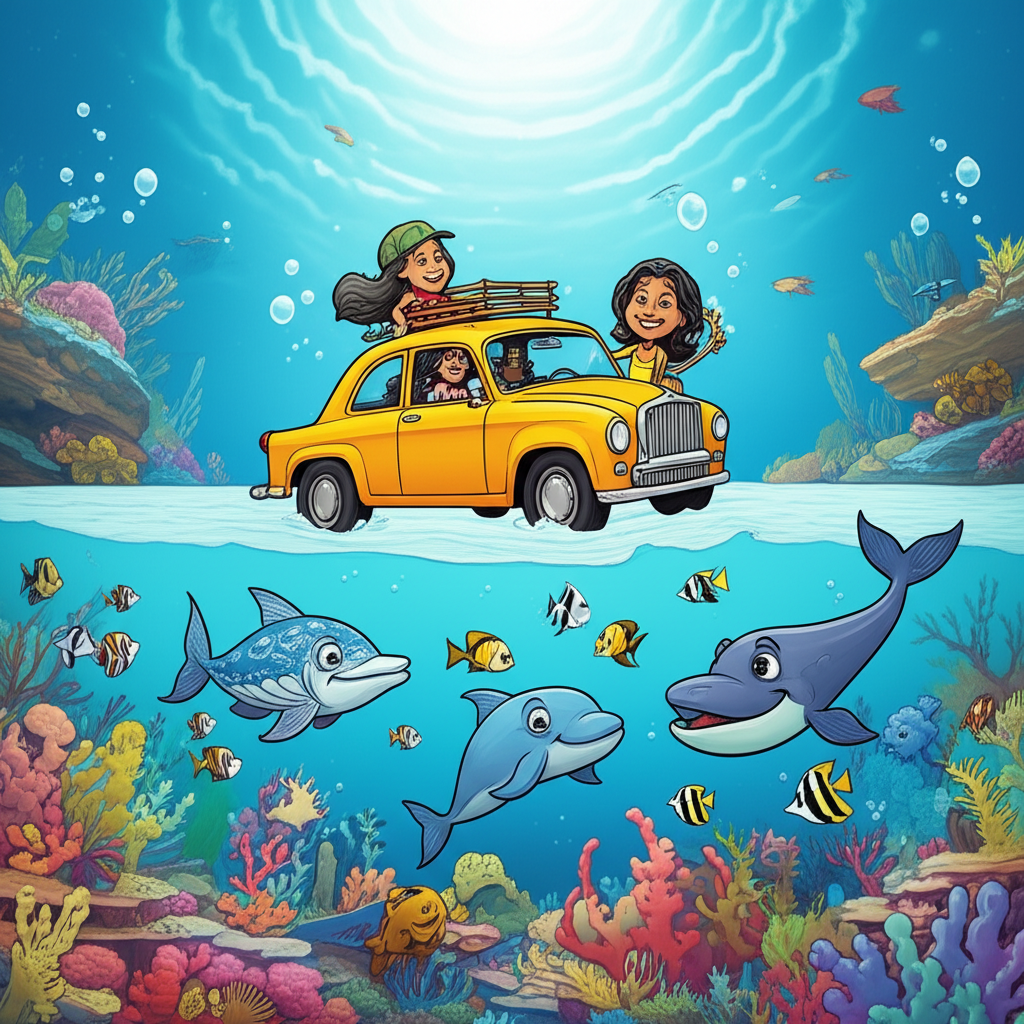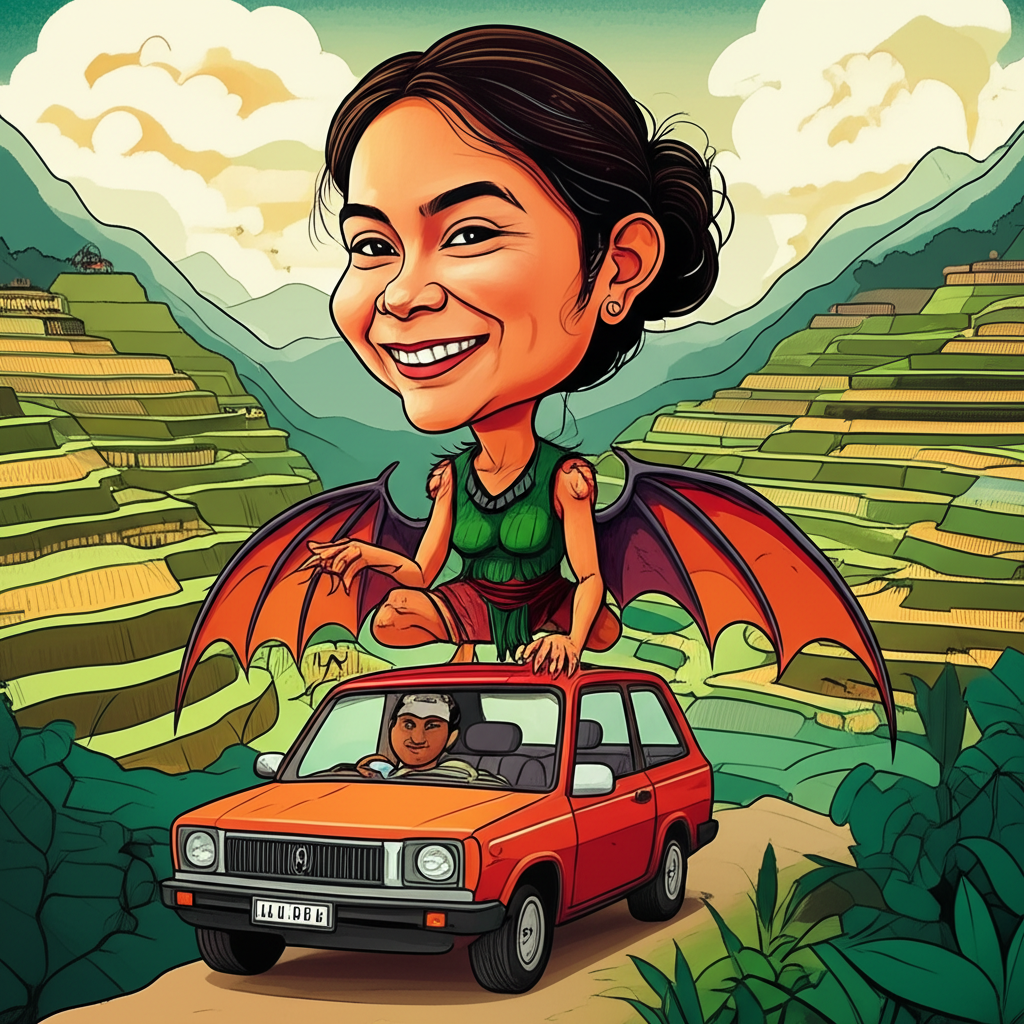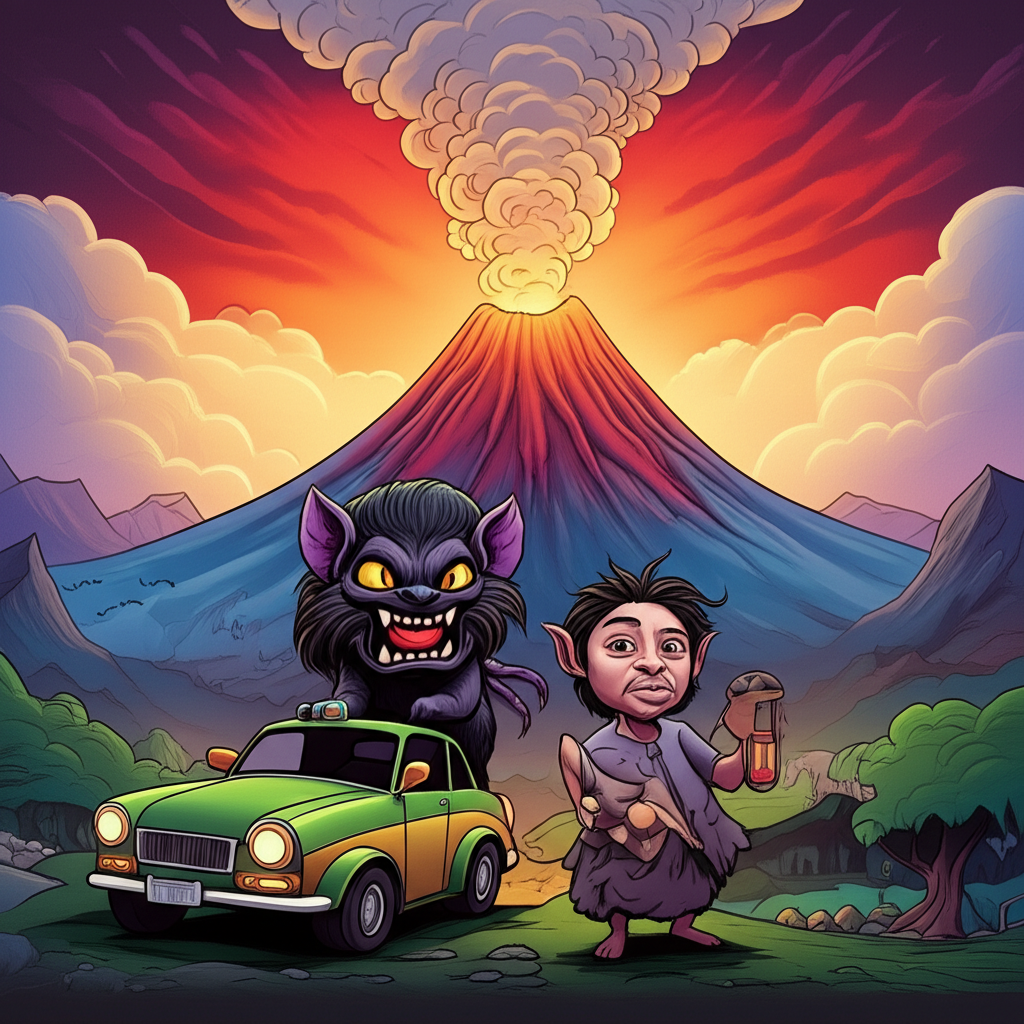
Introduction
This story originates from the rich tapestry of Filipino mythology, specifically woven within the cultural heritage of the Tagalog people of Luzon, the largest island in the Philippines. It is a traditional creation myth, a story passed down through generations by the ancient Tagalog people, a way for them to understand the world around them, the origins of life, and the forces they perceived as shaping their reality. This is not a tale to be taken as literal truth, nor should it be interpreted as a source of divine instruction. Rather, it is a window into the imaginative world of our ancestors, a reflection of their worldview, their fears, and their hopes, all expressed through the vibrant language of storytelling.
Origins and Cultural Background
The Tagalog creation myth, particularly the elements that tie into the Visayas seas, likely took shape during a period when the Tagalog people were deeply connected to the sea. This was a time of pre-colonial Philippines, before widespread conversion to Islam or Christianity. Society was organized into small barangays (villages), each led by a datu (chief). Life revolved around agriculture, fishing, and trade, with the sea serving as a source of sustenance, a means of travel, and a boundary between the known and the unknown.
Their worldview was animistic, meaning they believed spirits, both benevolent and malevolent, inhabited the natural world. Everything – the sky, the mountains, the rivers, the sea – was alive with these unseen forces. These spirits, or anitos, were often associated with ancestors and were believed to influence the events of daily life. The people sought to appease these spirits through rituals and offerings, hoping to maintain balance and harmony within the universe. They looked to the natural world for answers, interpreting the movements of the sun, the moon, and the stars as signs and omens. The sea, in particular, was seen as a powerful and mysterious force, both nurturing and destructive. The creation myth, therefore, was a way to explain the origins of this powerful element and its impact on their lives.
Character / Creature Description
The characters in this Tagalog creation myth are not meant to be seen as divine entities, but rather as symbolic representations of powerful forces and natural elements. One prominent figure is Bathala, often portrayed as a powerful, supreme being, a sky god, but in some versions, his role is more ambiguous. He is not necessarily the ultimate creator in the Abrahamic sense, but the source of life, order, and governance. Other key figures might include Amihan (the North Wind) and Habagat (the South Wind), representing opposing forces of nature. The sea itself might be personified, perhaps as a primordial being, representing the vast, untamed power of the ocean. These figures are not concrete beings, but rather representations of concepts that the Tagalog people used to understand their world.
Main Story / Narrative Retelling
Before time began, there was only the sea. Endless, churning, and dark. Above, there was the sky, equally desolate. Between them, there was nothing. The Tagalog people told of a time when the sea and sky were in constant conflict, a swirling chaos of water and air.
From this primordial chaos, emerged Bathala. He was a being of immense power, a force that brought order to the swirling chaos. He ruled over the sky, but he was not alone. The sea, even then, possessed a wild, untamed energy, and from its depths, rose a powerful serpent, a being of immense scale and strength, who sought to challenge Bathala’s dominion.
The serpent was a formidable adversary, its scales shimmering like the deepest ocean trenches, its eyes glowing with the fire of the abyss. Battles between Bathala and the serpent were said to shake the very foundations of the world. Each clash caused tremors, creating the islands and archipelagos that dot the Visayas seas, fragments of the world in the making. The sea, enraged by the conflict, raged and fumed, its currents churning and swallowing entire lands.
One day, after a particularly fierce battle, Bathala, exhausted and wounded, retreated to the sky. The serpent, victorious for a moment, celebrated its triumph by coiling around itself, its massive body becoming a mountainous island in the middle of the raging sea. As the serpent rested, the sky, still bruised from the battle, wept. Rain poured down, filling the valleys and carving the rivers, washing away the remnants of the conflict. From these tears, and from the remnants of the serpent’s body, the first plants and trees began to sprout.
Later, from Bathala’s tears of joy, the first man and woman were born, and they were placed upon the land. They saw the remnants of the battle, the mountains and the seas, the islands and the currents, and knew that they were but a small part of a larger story. The North Wind, Amihan, and the South Wind, Habagat, began to blow, bringing with them the seasons and shaping the world. The sun and the moon emerged, bringing light and darkness. And so, the world began to take shape, a testament to the conflict between the sky and the sea, the chaos and the order, and the enduring power of creation.
The story goes on to detail the lineage of the first humans and how their actions would shape the landscape and the relationships with the spirits. These details vary from telling to telling, but the core narrative remains: a world born from conflict, shaped by powerful forces, and inhabited by humans learning to live in harmony with the natural world.
Symbolism and Meaning
The Tagalog creation myth, particularly the aspects involving the Visayas seas, is rich with symbolism. The conflict between the sky and the sea likely represents the tension between order and chaos, the known and the unknown. Bathala’s role suggests the establishment of order and governance, while the serpent embodies the untamed, potentially destructive forces of nature.
The churning seas and the subsequent formation of islands symbolize the continuous process of creation and transformation. The islands themselves, the Visayas, are seen as remnants of this primordial struggle. They are not merely landmasses, but physical manifestations of the world’s origins. The winds and the weather patterns, represented by Amihan and Habagat, highlight the cyclical nature of life and the interplay of opposing forces. The creation of humans from the sky god’s tears suggests the divine origin of humanity and their connection to the natural world. The story, as a whole, underscores the importance of balance, the need to understand and respect the powerful forces that shape their environment, and the interconnectedness of all things.
Modern Perspective
Today, this myth is no longer considered to be a literal account of creation. Instead, it is appreciated as an important part of the Filipino cultural heritage. It’s preserved in various forms, including literature, academic research, and popular culture. Some authors and artists draw inspiration from these myths in their works, reinterpreting them through contemporary lenses. It serves as a source of national identity, a reminder of the rich history and traditions of the Philippines. You might find references to Bathala and the serpent in novels, movies, video games, and even musical compositions. Academic studies explore the cultural and historical significance of the myth, providing insights into the values, beliefs, and worldview of the ancient Tagalog people.
Conclusion
The creation tales of the Tagalog people, particularly those connected to the Visayas seas, offer a fascinating glimpse into the imaginative world of our ancestors. It is a cultural story, not a belief system, and we, as Muslims, recognize that only Allah is the true Creator and Sustainer. We understand that these stories were a way for our ancestors to make sense of the world, to explain the origins of life and the forces they perceived as shaping their existence. They are a testament to the power of human imagination, the enduring allure of storytelling, and the importance of preserving our cultural heritage. These tales remind us of the beauty of cultural diversity and the value of understanding the different ways people have sought to answer the fundamental questions of existence. The sea continues to whisper its tales, and it is our responsibility to listen and learn from the echoes of the past, celebrating the creativity and the resilience of the human spirit.





